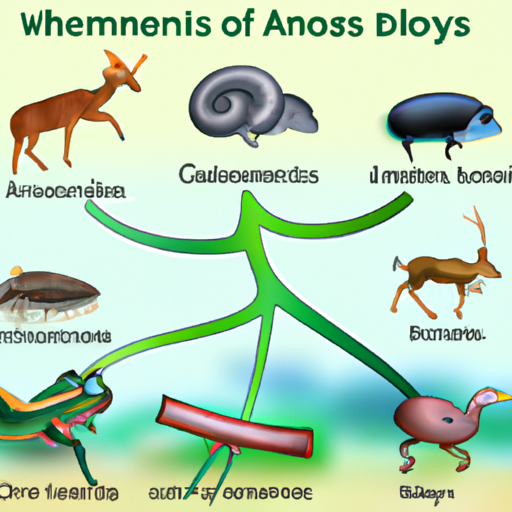 Introduction:
Introduction:
The Earth is teeming with an incredible diversity of life forms, each uniquely adapted to their specific habitats and niches. Animals, one of the most diverse groups of organisms, captivate us with their incredible behaviors, appearances, and ecological roles. As eukaryotic organisms, animals share certain fundamental characteristics that distinguish them from other domains of life. This article aims to delve into the intricate world of animals and explore the reasons behind their classification as eukaryotes.
Defining Eukaryotes:
To understand why animals are considered eukaryotic organisms, it is essential to first grasp the concept of eukaryotes. All living organisms are broadly classified into three domains: Archaea, Bacteria, and Eukarya. Eukaryotes, which belong to the Eukarya domain, are characterized by the presence of a true nucleus enclosed within a membrane, as well as other membrane-bound organelles within their cells.
Cellular Structure of Animals:
One of the defining features of eukaryotes, including animals, is their complex cellular structure. Animal cells are composed of various organelles, each with specific functions that contribute to the overall organization and functioning of the cell. Some key organelles found in animal cells include the nucleus, mitochondria, endoplasmic reticulum, Golgi apparatus, lysosomes, and peroxisomes.
Nucleus: The nucleus, housing the organism’s genetic material (DNA), is the control center of the cell. It regulates various cellular processes, including growth, reproduction, and protein synthesis.
Mitochondria: These energy-producing organelles generate adenosine triphosphate (ATP) through cellular respiration, providing the cell with the necessary energy to carry out its functions.
Endoplasmic Reticulum (ER): The ER is a network of membranes involved in the synthesis and transport of proteins and lipids within the cell.
Golgi Apparatus: Responsible for modifying, sorting, and packaging proteins and lipids into vesicles for transport to their final destinations within or outside the cell.
Lysosomes: These specialized vesicles contain digestive enzymes that break down cellular waste, foreign substances, and cellular components no longer needed by the cell.
Peroxisomes: Involved in the metabolism of fatty acids, amino acids, and detoxification of harmful substances.
Cellular Organization and Reproduction:
Eukaryotic cells, including animal cells, possess a higher level of organization compared to prokaryotes (bacteria and archaea). Animal cells are often specialized to perform specific functions within a multicellular organism. These specialized cells come together to form tissues, which further organize into organs and organ systems. This hierarchical organization allows animals to carry out complex physiological processes necessary for survival, reproduction, and environmental interactions.
Reproduction in animals occurs through sexual or asexual means, depending on the species. Sexual reproduction involves the fusion of specialized reproductive cells, or gametes, from two individuals, resulting in offspring with genetic diversity. Asexual reproduction, on the other hand, involves the production of genetically identical offspring from a single parent.
Evolutionary Origins:
The evolution of eukaryotes, including animals, is believed to have arisen from a symbiotic relationship between primitive prokaryotic cells. This theory, known as endosymbiotic theory, suggests that mitochondria and chloroplasts, found in plant cells, were once free-living bacteria that were engulfed by ancestral eukaryotic cells. Over time, these bacteria developed a mutually beneficial relationship with their host cells, eventually becoming integrated as essential organelles.
By evolving complex cellular structures and functions, animals gained an advantage in adapting to their environments, diversifying into an extraordinary array of ecological niches. This diversity is evident in the remarkable range of animal forms and adaptations we observe today.
Conclusion:
Animals, as eukaryotic organisms, exhibit a remarkable level of cellular complexity, organization, and reproductive strategies. Their classification as eukaryotes is based on the presence of a nucleus and other membrane-bound organelles within their cells. This cellular complexity, combined with their ability to specialize and organize into tissues, organs, and systems, has allowed animals to adapt and thrive in diverse environments. Understanding the eukaryotic nature of animals not only sheds light on their biological uniqueness but also highlights their pivotal role in maintaining the delicate balance of ecosystems worldwide.
